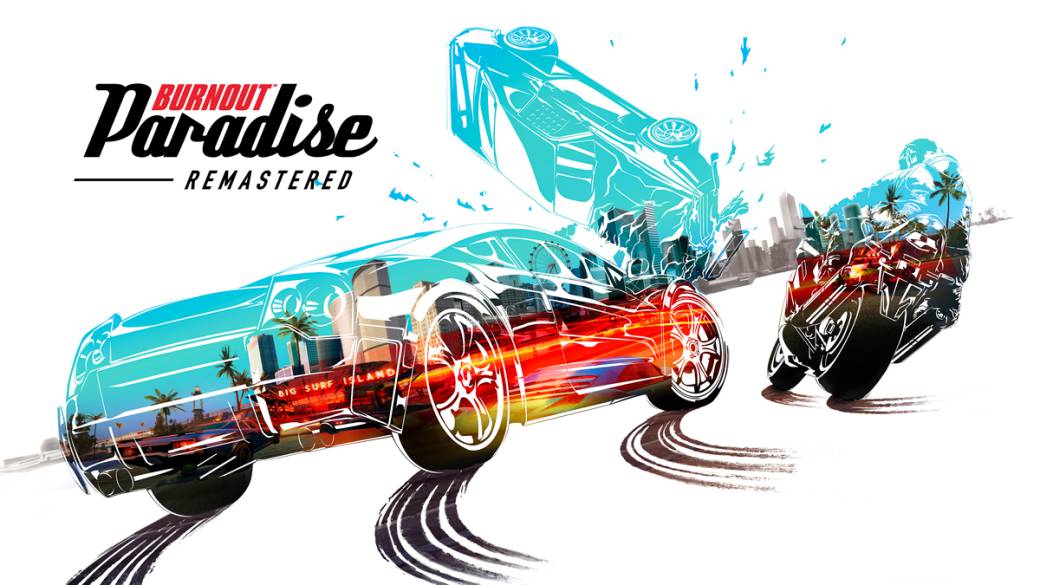
We analyzed the wild Burnout Paradise Remastered on Nintendo Switch. Does this port do justice to Criterion’s great arcade racing classic?
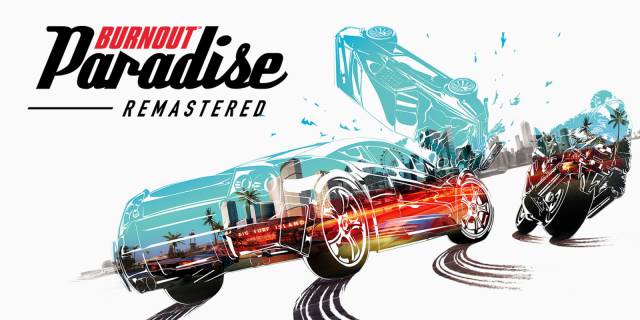
The fireproof and beloved Burnout Paradise arrives on the Switch circuits in its Remastered version. Let’s see what gives this port of the influential classic of arcade racing. We’ll see if the Criterion game keeps the guy running in the bowels of the Nintendo hybrid console. We start engines and we will tell you about it in the following paragraphs. Welcome to the review of Burnout Paradise on Switch.
As in other cases of games reincarnated in a new machine with a few years of delay, we invite our readers to take a look at the Reviews that we published at the time. We will try here to offer light and color that complement the work already done by our partner.
The ingredients of the perfect recipe
Burnout lived moments of glory at its birth in the generation of the 128 bits. These were arcade car races on urban circuits with traffic where risk was rewarded. Driving in the opposite direction or skimming the bodies of clueless drivers was filling the turbo bar that could be so important at decisive moments. Driving anxiety was complemented by generous checkpoints, which were noted in their countdown when we collided more than they should. The funny thing is that it was a game where losing seconds provided pleasure in a spectacular way. When we failed to catch a curve or crash into a bus that had come in our way at an intersection, the cinematic camera game and slowing down of the action transmitted a huge rush to the user. From there, there was only one step to immortality, and it was in the act of intentionally taking rivals off the track. We already had the hallmark of the saga: the Takedown.
It was not a guilty pleasure, as it was intended to imply from the spokesmen of the mass media. The tricky part of the subject, the always unwanted traffic accidents in the real world, had forced to pull imagination in the commercials. Among newscasts, two vehicles parked next to each other appeared on our televisions, with a voiceover that told us that the game was going from full-fledged cars giving each other pineapples, while, in the images, drivers spilled milk bottles out the window and they exchanged pineapples (from which exotic pizzas are eaten and decorated). With the game in the hands of the user, it was shown that there was no sexual apology for the twisted metal in harsh Ballard-style collisions, but rather a childish happiness from when we tied it up with toy cars. So much so that a celebrated option that was based solely on causing accidents was enabled. Crash Mode returned us directly to the junction between the carpet and the bunk in our unruly nursery. Booom, Craaaash! The punctuation and explosion enhancers digitized our children’s onomatopoeias in great detail.
Successive installments of Burnout were coming to PS2, Xbox, Gamecube, there were even excellent titles on PSP and blushing appearances on Nintendo DS. With the release of PS3 and Xbox 360, Criterion surprised us by renewing a formula that had already become classic but also felt tired of itself. The only Burnout that graced that generation was Paradise, and it turned out to be so good that, in the throes of the later gen, that of PS4 and One, we are still proud of it.
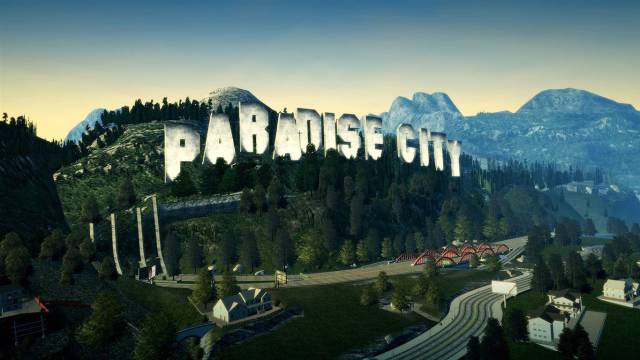
Keep the essence, change everything else
Burnout Paradise started running on the new machines in 2008. The urban environment and surroundings, traffic and takedowns continued in the formula, but the predetermined routes based on large neon arrows were left behind in pursuit of freedom to travel streets. and roads. A challenge at each crossroads: race, fury at the wheel, tricks … and carte blanche to reach the destination or achieve the objective set.
Uncertainty was our co-pilot in the first hours of play. Without a defined route to get from A to B, the concentration should be maximum to look at the road, at rivals, traffic, possible shortcuts, the flashing light that indicated in the vehicle where to turn at the next intersection and the blinking in the top of the street name at the next turn to take. It seems stressful written here, so imagine what it was like with a controller in your hands. The accumulation little by little of experience made us end up expelling uncertainty from our car without taking our foot off the accelerator, there, in the middle of a skid in the middle of a curve. In the rear-view mirror we saw the body roll away towards a gutter. He would never bother us again. It was at that moment that we understood that this was about freedom, that nothing was wrong, to get lost.
The game became in the first hours in that patronizing father that lets us win a race that we know lost. We were taking an erroneous route that took us in the opposite direction to the goal, and there were on the map those red arrows making the rounds while the white arrow, we, found the correct path. In those hours it was worth the slow understanding of the map, that what seemed like a shortcut perhaps was not, that perhaps he wanted to ignore the indications of an optimal route to embrace with anger and arrogance the unknown. Once the uncertainty lay on the ground motionless there was no turning back. The city was ours.
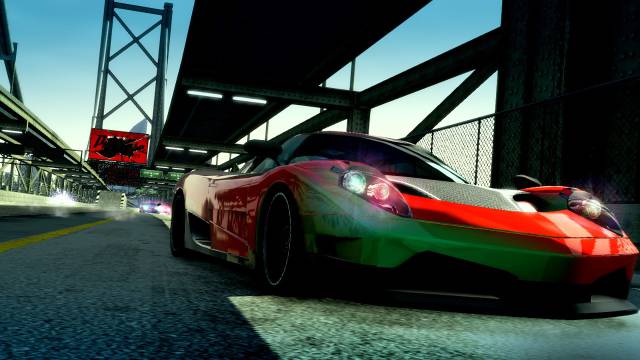
The post Paradise era
It has rained a lot on digital asphalt in the last twelve years. Many of the works that have been raised since then on fields and cities carry in their binary dna the bastard code of Burnout Paradise, with the enormous mapping and freedom for the flag. But there is more.
Criterion itself honed the qualities of Paradise’s offspring when it took over a limping, by then, Need for Speed franchise. This is how they arrived to breathe life into Hot Pursuit (2010), in the classic line of closed paths, focusing on the persecutions; Most Wanted (2012), a more refined and elegant Paradise that smelled of Chanel and not of burned motor oil, both were great games; and Rivals (2013), an inter-generational installment that expanded the mapping and delved into the online component. In the latter, they helped Ghost Games, who are truly responsible for the title.
Paradise had already tried certain settings that made driving on a non-existent track easier. The Big Surf Island DLC, focused on making the kaffir with our racing cars, however, domesticated the routes in the races with light markers that rose hundreds of meters from the ground and were visible from any point on the map. It may have been due in principle to a need to optimize that island of much more limited dimensions than the huge mapping of the base game. There were races that showed you those numbered checkpoints zigzagging, placed in a circle marking the perimeter of the island, or gibberish that resulted in an impossible drawing following the points. In the long run, the developer must have realized how practical it was to focus the player’s attention on the objective. Traces were still dispensed with and driving freedom was maintained, but the player simply had to meander through the streets, always keeping in mind that beam of light on the horizon. The finding became a standard.
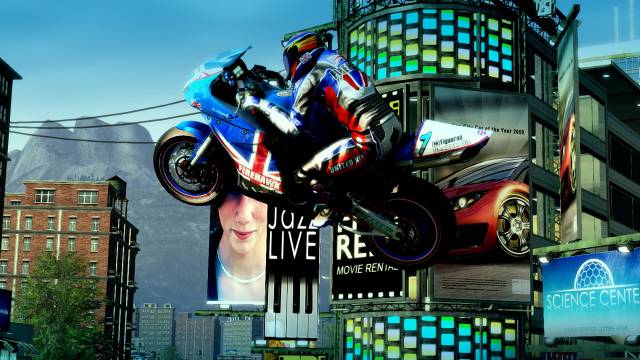
A remastered version for new generations
Aware of the validity of the original formula, it was time to get the old star into shape to bring her back to the stage. The remastered version for PS4, One and PC that arrived in 2018 raised and stabilized the framerate, raised the level of the textures and made adjustments to the lighting. All the DLCs were included: motorcycles, legendary cars, Toy Cars, the commented new Big Surf Island area, etc. but the absences from the original game were also maintained. Paradise had lost the Crash mode of the 128-bit era, and was already scrupulous in depicting violence in detail on stage by excluding the driver from the equation. Yes the cars here are remote control. And the motorcycles? Fade to black on each crash and start over. Crash mode would have been a nice addition if we didn’t live in today’s hypersensitive society.
The version of Switch, also made by Stellar Entertainment, maintains the type only weighed down by the usual in these cases: some triggers that are not intended for driving games. The resolution in laptop is 720p and in 900p dock, and the frame rate supports the desired 60 fps. It is very fluid to play and a pleasure to do it on a laptop. Despite the stress already caused by driving at full speed through open environments without a clear delimitation of the route, our view is made to the small screen in a few minutes (for the account that brings us). The online mode reaches up to eight participants, who go out of their way to make us bite the dust, although we also find common goals. In short, Burnout Paradise on Switch is an excellent port of the remastered version, and a great way to enjoy this classic in all its glory.
CONCLUSION
Burnout Paradise Remastered on Switch is included in the best port section of the console. Everything is here, with fluency at 60 fps as a great and undeniable achievement. While open world arcade driving games have evolved since the game initially came in 2008, it should also be noted that Paradise marked the path (road) to follow at multiple points. Today’s games have softened how aggressive driving was by following our instincts. In this sense, Paradise retains that sense of continuous risk and danger that we do not find in today’s more friendly player games. Paradise is an all or nothing that is still appreciated today. Wild, violent, stressful, alive, a brazen and never forgotten king who claims without blinking the place that he knows belongs to him.
THE BEST
- The game endures the type despite the years that have passed.
- Very fluid with its constant 60 fps.
- Includes the 8 DLCs that came with the original game (We can drive the Back to the Future car and the Ghostbusters car!).
- The talkative dubbing in Spanish and the marvelous hardrockera soundtrack (Jane’s Addiction!).
- Maximum laptop resolution.
WORST
- That in the dock stays at 900p, although it is not a problem.
- We still miss Crash mode.
- New players can get too stressed out driving almost instinctively.
- Switch triggers, which are not intended for car games.
Okay
It meets the expectations of what is a good game, it has quality and does not have serious flaws, although it lacks elements that could have taken it to higher levels.
